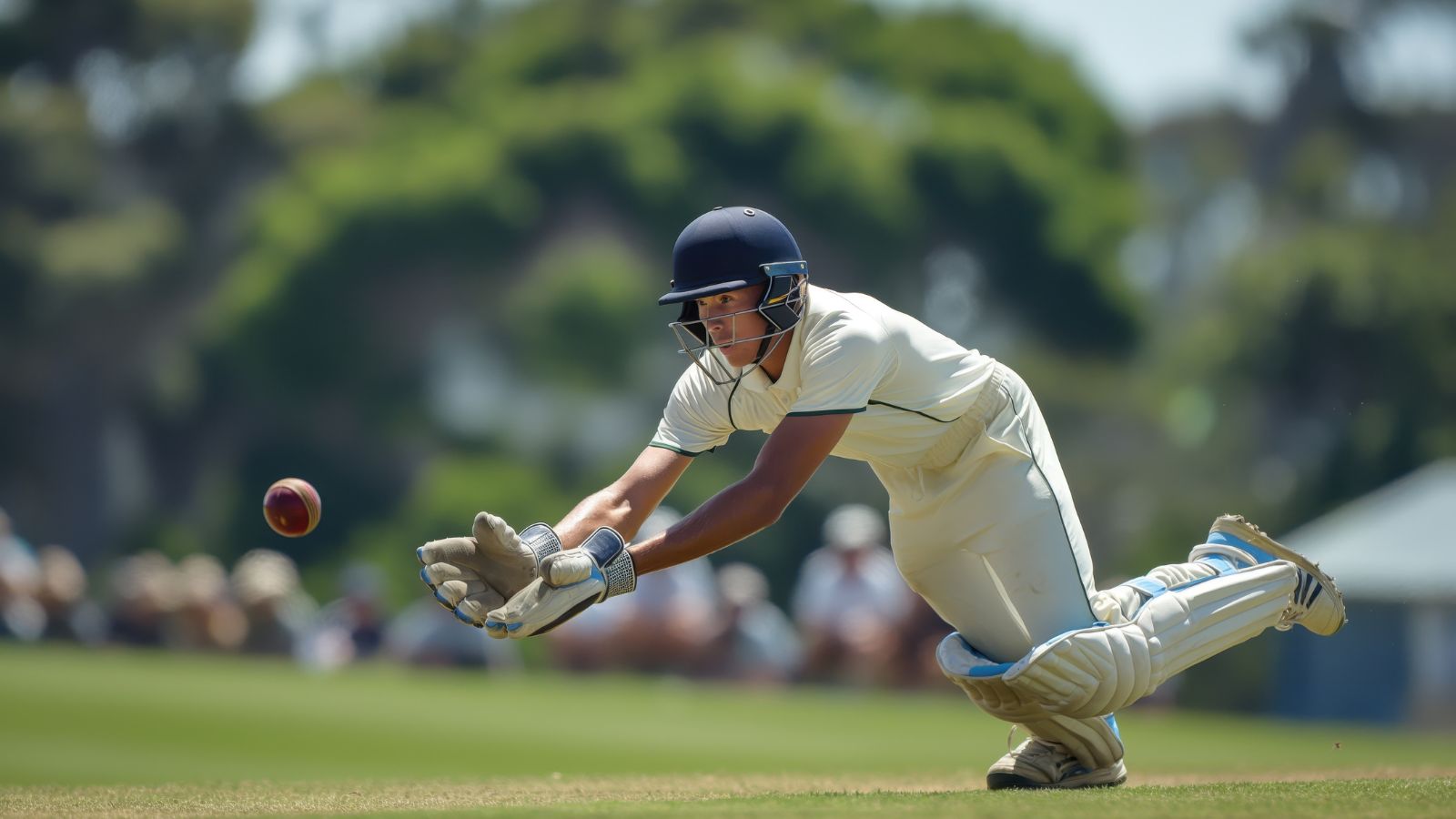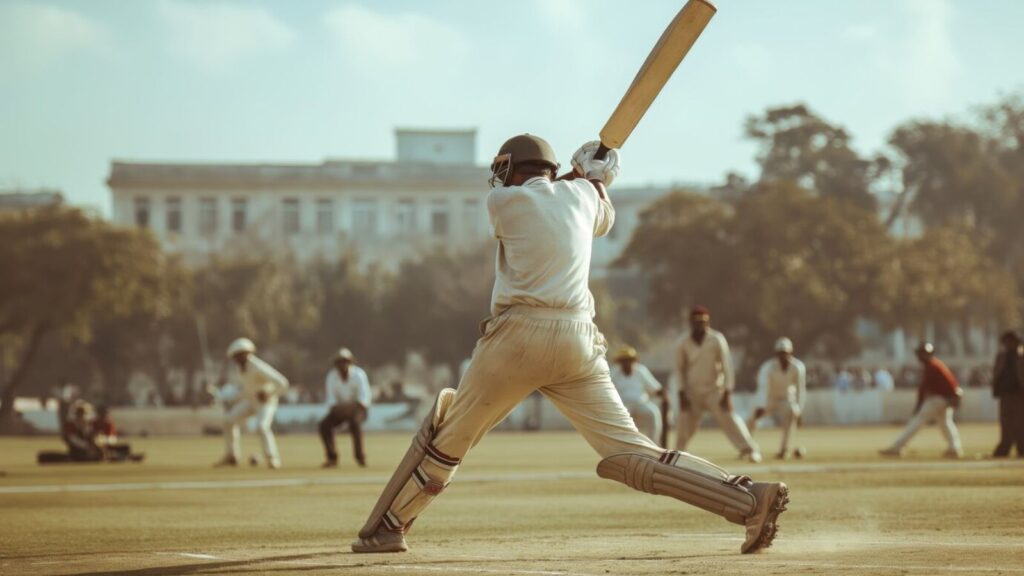Cricket isn’t just a sport associated with runs and wickets—it is an action-packed soap opera filled with jaw-dropping suspense, hidden skills, and exhilarating twists. And one of the highlights of this sport is reverse swing. Picture a fast bowler sprinting towards the wicket and unleashing a ferocious pitch with an extreme overhand throw of their arm, whilst gripping an old, battered ball. Out of nowhere, it seems, the bowler expertly makes the ball turn in the direction that is in direct contrast to where everyone expects it to go.
That is reverse swing, not only is it captivating, but it is extraordinarily lethal! While the opponent is fully aware of traditional swing, it’s axiomatic that reverse swing happens unexpectedly and late in the match, without warning and stealthily. And when the time comes, reverse swing is guaranteed to do the unthinkable—it turns the story around.
What Is Reverse Swing?
In order to understand reverse swing, let’s first discuss the concept of swing. When the ball is new, shiny, and smooth, one side is kept smooth while the other is allowed to get roughened up slightly. A swing is caused by which side is polished and worn out. The lack of airflow or smooth side gets smoother airflow, while the worn side gets rough, turbulent air. This creates an imbalance, which causes a swing to occur on the rough side, which is caused by the difference in pressure.
Now, this is where it gets really interesting; as time goes by, swings become rougher. With some intelligent handling of the ball and speed, the swing happens on the polished side.
Now, for those looking to catch all the live cricket action and odds as they unfold, the MelBet registration is the place to start.
Why Reverse Swing Works (And When)
Reverse swing doesn’t happen by accident. It requires precision, patience, and a solid understanding of what affects air movement around a cricket ball. Here’s what plays into it:
- Speed: The bowler needs to hit at least 85 mph (137 km/h). Without that pace, the necessary turbulence doesn’t happen.
- Ball Age: Typically begins after 30–40 overs, when the ball is roughed up enough on one side.
- Surface Maintenance: One side must be kept polished while the other is allowed to wear down.
- Seam Position: The seam is angled slightly to guide airflow in a way that encourages swing.
- Pitch and Weather: Dry pitches and abrasive outfields help rough up the ball more quickly.
When the conditions are met, the rough region of the ball makes air detach from the surface sooner, whereas the shiny side retains airflow longer. This pressure imbalance causes the ball to swerve erratically.
The Bowlers Who Nailed It
Reverse swing can make even the best batters look silly. And the bowlers who mastered it became legends. Here are just a few who turned it into an art form:
- Wasim Akram & Waqar Younis – This Pakistani pair brought reverse swing to the global stage in the 1990s.
- Andrew Flintoff & Simon Jones – Their reverse swing dominance helped England win the 2005 Ashes.
- Dale Steyn – Used sharp reverse swing at high speeds to terrorize batting line-ups.
- Mitchell Starc – Known for swinging old balls back into right-handers with pace and precision.
These players didn’t just bowl fast—they understood the conditions, maintained the ball carefully, and knew exactly when to strike.
Check out more cricket updates, reels, and behind-the-scenes action on MelBet Instagram Bangladesh.
Quick Guide: How to Spot Reverse Swing
Not sure if what you’re watching is reverse swing? Here’s how to tell:
- The ball is old (usually 30+ overs)
- The movement happens very late, just before it reaches the batter.
- It swings toward the shiny side, not the rough one.
- It usually surprises the batter completely.
It often results in bowled stumps or trapped LBWs—those beautiful “How did that happen?” moments.

Not Without Drama
Of course, reverse swing hasn’t always had a clean reputation. Because it depends on ball condition, it’s often linked to controversy. Accusations of ball tampering have followed reverse-swinging teams over the years—intentional scuffing, using fingernails, even applying foreign substances. But when done within the rules, it’s completely legitimate—and incredibly fun to watch.
Summary: What You Need for Reverse Swing
Here’s a simple checklist for what it takes:
- The ball is older than 30 overs
- Speeds over 85 mph
- One side kept smooth and shiny.
- Dry pitch conditions
- Seam angled subtly
- A bowler who knows their stuff
Final Thoughts
Reverse swing is one of cricket’s most exciting quirks. It comes late in the game, often when hope seems lost, and turns the ball into a missile that obeys its own rules. It’s not easy to master, but when bowlers get it right, it’s nothing short of brilliant.
Whether you’re a player, a fan, or someone who just loves the physics behind the game, reverse swing is one of those rare things in sport that never gets old, only better with age.


